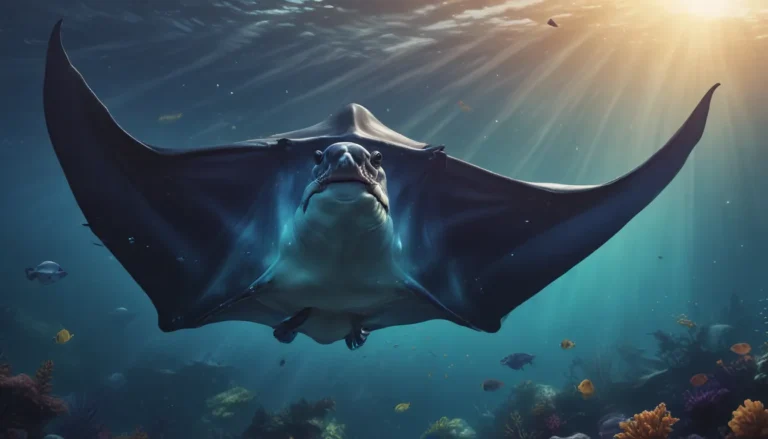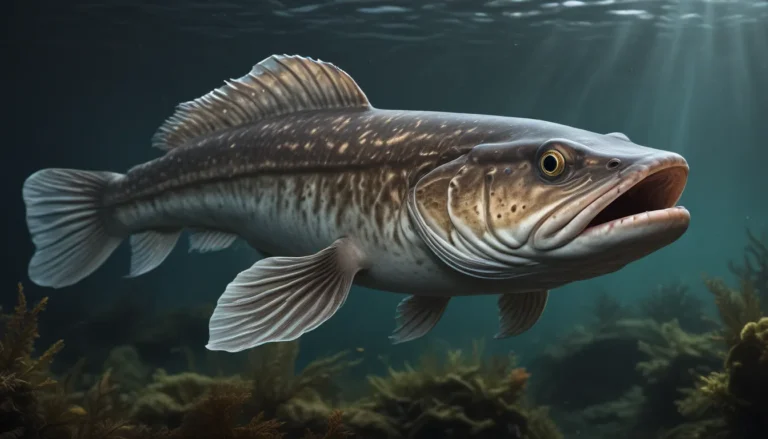The pictures we use in our articles might not show exactly what the words say. We choose these pictures to make you interested in reading more. The pictures work together with the words but don’t take their place. The words still tell you the important facts.
Welcome to the captivating world of striped dolphins, where beauty meets intelligence in the vast oceans of our planet. These sleek and agile creatures, adorned with striking blue and white stripes, are not just mesmerizing to behold but also play a vital role in marine ecosystems. In this article, we will explore 19 incredible facts about these marine mammals, shedding light on their habitat, behaviors, and unique adaptations. Whether you're a marine enthusiast, a nature lover, or simply curious about the wonders of the animal kingdom, join us on a journey to uncover the fascinating world of striped dolphins.
Key Takeaways:
- Striped dolphins, with their social, acrobatic, and fast-swimming nature, are essential members of marine ecosystems that require our protection. - These intelligent creatures exhibit remarkable communication skills, cooperative hunting strategies, and nurturing maternal instincts, making them a joy to observe in their natural habitats.
Striped Dolphins: A Symphony of Blue and White
Adorned with vibrant blue-gray stripes that embellish their bodies from the lower jaw to the flippers, striped dolphins are truly a sight to behold. These distinctive markings set them apart from other marine species and add to their charm and beauty.
Social Butterflies of the Sea
One of the defining characteristics of striped dolphins is their highly social nature. They can often be spotted swimming in large pods comprising hundreds or even thousands of individuals. This social structure not only provides companionship but also serves important functions in their daily lives.
The Ballet of the Ocean: Acrobatic Displays
When it comes to agility and acrobatics, striped dolphins take center stage. Their energetic nature often leads them to leap out of the water, perform elegant flips, and ride the bow waves created by passing boats. Witnessing these majestic displays is a true spectacle of nature.
Speed Demons of the Deep
With their streamlined bodies and powerful tails, striped dolphins are among the fastest swimmers in the ocean. Capable of reaching speeds of up to 37 miles per hour (60 kilometers per hour), these marine mammals are built for swift and efficient movement through the water.
A Global Voyage: The Distribution of Striped Dolphins
From the Atlantic to the Pacific and Indian Oceans, striped dolphins can be found traversing the warm tropical and subtropical waters of various oceanic regions. Their wide distribution reflects their adaptability to diverse marine environments.
Masters of the Hunt
Striped dolphins boast a diverse diet that includes fish, squid, and crustaceans. Using their echolocation abilities, they expertly locate and capture their prey, showcasing their prowess as efficient hunters in the marine food chain.
The Language of the Dolphins: Communication Skills
Communication among striped dolphins is a sophisticated affair, involving a symphony of clicks, whistles, and body movements. This intricate form of communication plays a crucial role in hunting, socializing, and maintaining hierarchy within the pod.
Ageless Wonders: Longevity of Striped Dolphins
On average, striped dolphins enjoy a lifespan of around 55 years, with some individuals exceeding this age in captivity. Their longevity speaks to their resilience and adaptability in the challenging marine environment.
The Brain Power Behind the Beauty
In addition to their physical agility, striped dolphins possess relatively large brains compared to their body size. This evolutionary adaptation hints at their complex cognitive abilities and sophisticated social behaviors, setting them apart as intelligent creatures of the sea.
Marshaling the Migration: Behavioral Patterns of Striped Dolphins
Striped dolphins exhibit both seasonal and daily migration patterns, following schools of fish as they navigate the vast oceanic landscapes. This migratory behavior is essential for their survival and reproductive success.
Ears to the Depths: Keen Hearing Abilities
Equipped with exceptional hearing capabilities, striped dolphins can detect sounds and communicate with their pod members even in the murky depths of the ocean. This acute sense of hearing is a vital tool for their navigation and social interactions.
Teamwork in Action: Cooperative Hunting Strategies
Intriguingly, striped dolphins engage in cooperative hunting tactics, working together to corral schools of fish for a more efficient catch. This collaborative behavior showcases their intelligence and social cohesion within the pod.
Dreamy Slumbers: Sleep Patterns of Striped Dolphins
Unlike humans, who engage in extended periods of sleep, striped dolphins practice a unique form of sleep called unihemispheric sleep. This adaptation allows them to rest one half of their brain while the other remains alert, ensuring constant vigilance in the marine environment.
The Joy of Play: Playful Behaviors
Playfulness is a hallmark of striped dolphins, as they can often be seen riding waves, leaping, and engaging in social interactions within their pod. This playful nature not only serves as a form of recreation but also strengthens social bonds among group members.
Guardians of the Sea: Maternal Care
Female striped dolphins exhibit unwavering dedication to their offspring, nursing them for up to 18 months and providing essential protection and guidance during their formative years. This maternal care plays a crucial role in the survival and well-being of the next generation.
A Call to Action: Protecting Striped Dolphins
Despite their resilience, striped dolphins face threats from pollution, entanglement in fishing nets, and habitat degradation. Conservation efforts are paramount to safeguarding their populations and preserving the delicate balance of marine ecosystems.
Identifying Marks: Unique Pigmentation Patterns
Each striped dolphin boasts individually distinct pigmentation patterns, akin to human fingerprints. These markings serve as valuable identifiers for researchers, enabling them to track and monitor individuals over time for research and conservation purposes.
Citizen Scientists Unite: Global Conservation Efforts
Citizen science initiatives empower individuals worldwide to contribute to the protection and study of striped dolphin populations. By reporting sightings and sharing valuable insights, citizens play a vital role in enhancing our understanding of these marine mammals and promoting their conservation.
Stewards of the Seas: Ecological Significance
As apex predators in their marine habitats, striped dolphins play a critical role in regulating the populations of their prey species. By maintaining a healthy balance in marine ecosystems, these marine mammals contribute to the overall well-being of the oceanic environment.
In conclusion, striped dolphins are not just enchanting creatures of the sea but essential components of marine ecosystems. Their remarkable characteristics and behaviors underscore the importance of conserving and protecting these magnificent animals for future generations to appreciate. By delving into the intricate world of striped dolphins, we gain a deeper understanding of their unique adaptations, social dynamics, and ecological importance. Let us continue to cherish and safeguard these marine wonders, ensuring their presence in the oceans for years to come.
FAQs About Striped Dolphins
- What is the average size of a striped dolphin?
-
Striped dolphins typically measure between 6 to 8 feet in length and weigh around 220 to 330 pounds.
-
Where can striped dolphins be found?
-
Striped dolphins are commonly found in warm and tropical waters, particularly in the Mediterranean Sea, Atlantic Ocean, and Pacific Ocean.
-
How fast can striped dolphins swim?
-
Striped dolphins are known for their impressive speed and agility. They can reach speeds of up to 37 miles per hour.
-
What do striped dolphins eat?
-
Striped dolphins primarily feed on small fish, such as sardines, anchovies, and squid.
-
How long do striped dolphins live?
-
On average, striped dolphins have a lifespan of around 40 to 60 years.
-
Are striped dolphins endangered?
-
Currently, striped dolphins are not considered endangered. However, they face threats from pollution, entanglement in fishing nets, and habitat degradation.
-
Do striped dolphins communicate with each other?
-
Yes, striped dolphins communicate with each other using a variety of vocalizations, including clicks, whistles, and body movements.
-
How many calves does a striped dolphin have?
-
Female striped dolphins give birth to one calf every two to three years. The calf is nurtured and protected by its mother until it becomes independent.
-
Can striped dolphins leap out of the water?
-
Yes, striped dolphins are known for their acrobatic displays and can leap out of the water, performing impressive aerial maneuvers.
-
Do striped dolphins migrate?
- Yes, striped dolphins are known to engage in seasonal migrations in search of food and favorable breeding grounds.
We hope these FAQs have provided valuable insights into the world of striped dolphins and answered some of your burning questions about these fascinating marine mammals. Join us in our quest to learn, appreciate, and protect the enchanting creatures that grace our oceans with their presence.






